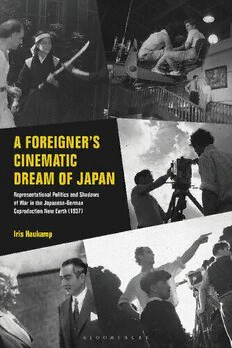
A Foreigner’s Cinematic Dream of Japan: Representational Politics and Shadows of War in the Japanese–German Co-production New Earth (1937) PDF
301 Pages·2021·28.561 MB·English
Most books are stored in the elastic cloud where traffic is expensive. For this reason, we have a limit on daily download.
Preview A Foreigner’s Cinematic Dream of Japan: Representational Politics and Shadows of War in the Japanese–German Co-production New Earth (1937)
Description:
In early 1936, a German film team arrived in Japan to participate in a film co-production, intended to show the ‘real’ Japan to the world and to launch Japanese films into international markets. While the production kick started the career of Japan’s silver-screen icon Hara Setsuko, the two directors clashed over the authenticity of the represented Japan and eventually directed two versions, The Samurai’s Daughter and New Earth, based on a common script. The resulting films hold a firm place in (film) history as an exercise in - or reaction against -politically motivated propaganda, respectively.A Foreigner’s Cinematic Dream of Japan contests the resulting oversimplification into nationalised and politicised dichotomies. Drawing on a wide range of Japanese and German original sources, as well as a comparative analysis of the ‘German-Japanese version’ and the elusive ‘Japanese-English version’, Iris Haukamp reveals the complexities of this international co-production. This exclusive research sheds light not only on the films themselves, but also on the timeframe of its production, with both countries at the brink of war.
See more
The list of books you might like
Most books are stored in the elastic cloud where traffic is expensive. For this reason, we have a limit on daily download.
